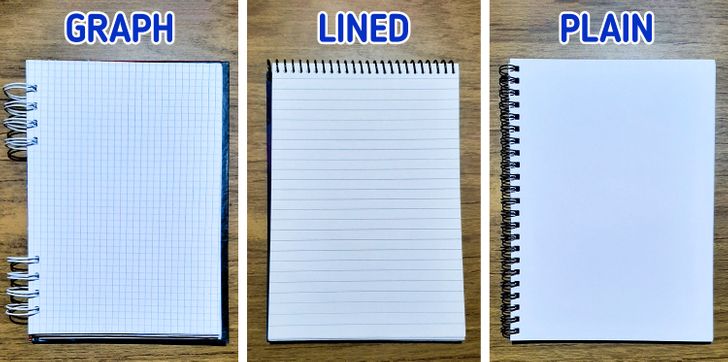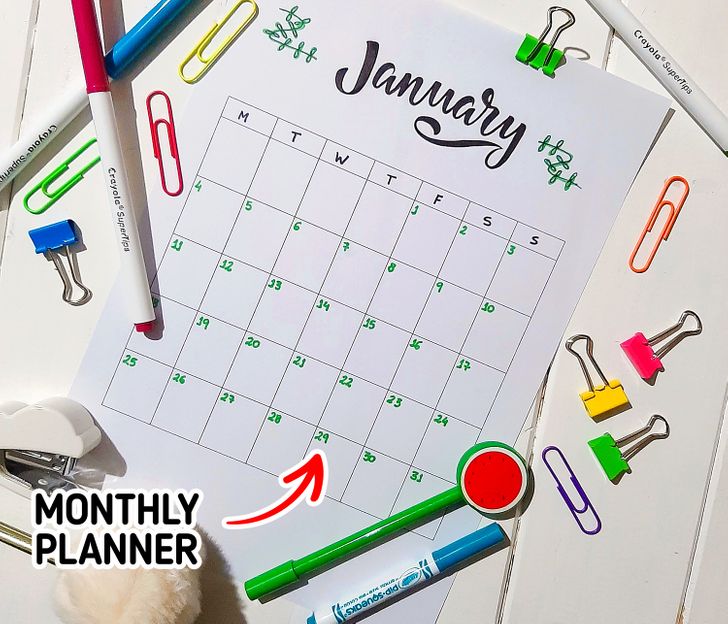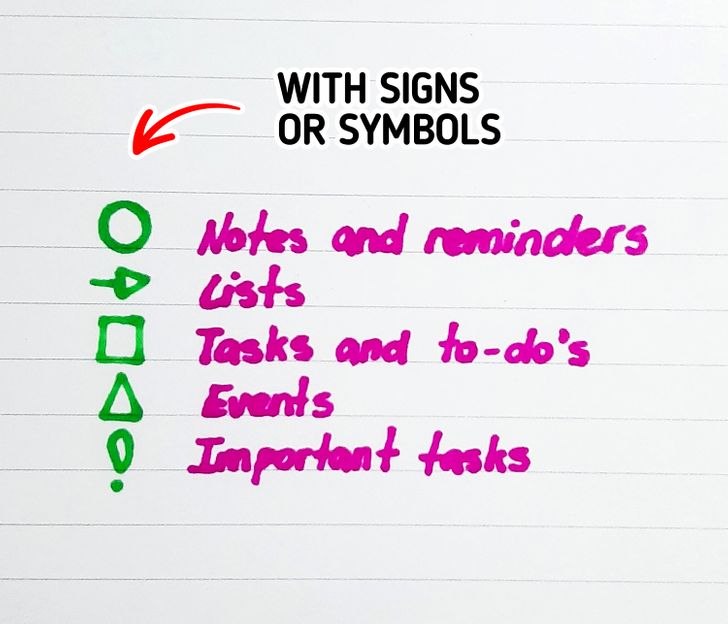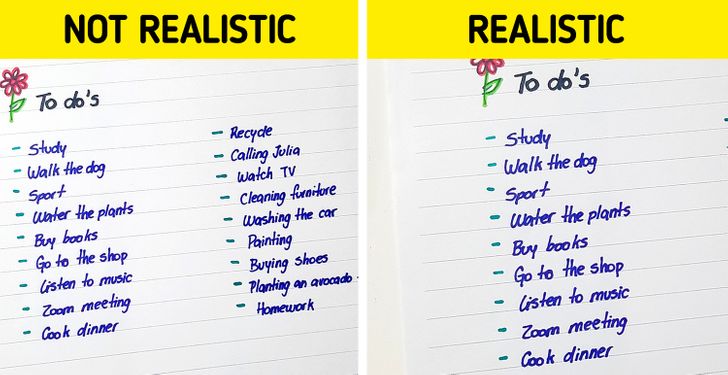How to Make a Bullet Journal
A bullet journal, or personal agenda, can be a great ally in our daily lives. It can help us to organize and plan our different tasks, to-dos, meetings, events, and leisure activities, both in our work and student life. In addition, it allows us to make lists of all kinds, including entertainment lists for movies to watch or albums to listen to.
5-Minute Crafts wants to share a very simple guide with you so you can create your own personal agenda, and customize it according to your preferences and needs.
What you’ll need
The items you will need will depend on how you will use the agenda and your personal preferences. As you can imagine, the most important part is to have a proper notebook, notepad, or agenda. Choose one that’s of your liking so that it inspires you to use it more often.
- It’s important to choose a size that feels comfortable for you. It can be large (A4) or small (A5). If you plan to use it as a pocket planner, it might be better to choose an even smaller size.
- Think about what type of sheet printing suits your needs best and choose accordingly. For example, you can have graph or lined paper. If you want to make drawings or do lettering on the planner, you might want to consider going for dotted or even plain sheets of paper. These will give you more freedom to express your creativity.
- The thickness of the sheets is also an important factor to take into account. They should not be so thin that they make writing with sharp pencils or ordinary pens difficult, because you’re afraid of piercing the paper. On the other hand, if you plan to use watercolor or markers, the paper should be thick enough to withstand the strokes without tearing. But the thicker the sheets are, the heavier the journal will be.
- You don’t necessarily have to use a new notebook for this project. You can also recycle old ones and combine different types of paper. You could also make one yourself.
Although most of these are optional, these other tools will prove to be very useful for writing and organizing your bullet journal and planner:
- Pens (black and colored, fine and thick-tipped, gel or even with glitter... There are many options out there, choose the ones you like the most!)
- Pencils (both graphite and colored)
- Crayons
- Pens, markers, and highlighters of different types and colors
- Stickers and stamps
- Rulers of different types (for straight lines, circles, geometric shapes, letters, etc.)
- Washi tape or decorative ribbons (these will not only help you to give a different and creative touch to your planner, but they can also be very useful for sticking photos, cut-outs, etc.)
- Paper clips, bookmarks, and page markers
- Stamps and ink
- Sticky notes
- Decorative paper
- Glue
- Scissors
- Ink eraser
- Paint
How to organize your bullet journal
The design and layout of your planner will depend on your needs, as we’ve said before. However, you’ll probably find that having the following sections will pretty much cover all your needs:
- Personal details: You can place this section on the first page and include your name, phone number, e-mail, reliable phone numbers, etc. This section will be very useful to include in case you lose your journal. That way, whoever finds it will be able to see that it belongs to you and give it back.
- Numbering on pages: Numbering each page will help you to keep everything in order in case sheets become loose or even detached from the notebook. It’s also a good way to reference and find information.
- Index: This will allow you to easily and quickly access any section of your personal agenda.
- Calendars: You can place an annual calendar at the beginning of the whole agenda and then a series of monthly calendars at the beginning of each month.
- Planners: You can have monthly, weekly, and daily planners.
- Notes: It can be a simple box at the end of each page, on the sides, or even a specific section, if you need more space. This is ideal for writing down all the things that don’t fit in previous sections. We’re thinking of small reminders, motivational quotes, etc.
- Lists: In your agenda, you might also want to have a grocery shopping list, a list of movies you want to watch or books you want to read, and even stores you plan to visit or music you are going to listen to. You can also make a list of wishes, of goals to accomplish, of the best things that happened to you during the day, and so on. All this will help you focus and visualize your goals clearly.
- Telephone directory: This section may not be so essential nowadays, since all cell phones have a function or an app where you can store your contacts quickly and without hassle. However, it’s always a good idea to keep important numbers and emails somewhere written on paper, just in case your cell phone breaks or you lose it.
- Expense table: Daily, weekly, monthly, and even yearly. This section will not only allow you to keep an accurate record of the money you’ve spent, but it will also help you see which bills you still have to pay, what things you have to buy, and how much you can save after doing all that.
Using signs and colors
You can select a few special symbols to indicate certain things in your agenda. These will allow you to quickly locate what you’re looking for without having to read every single piece of text. Some of these symbols can be:
- Circle: for notes and reminders
- Arrow: for lists (like for example, shopping lists)
- Square: for tasks and other types of to-do’s. This way, you can check the boxes as you go through the activities.
- Triangle: for events and meetings
- Exclamation mark: for urgent or very important tasks
If you want your agenda to look very colorful and full of life, you can also use a color system to be able to locate certain information faster. We came up with this system, but it can be tweaked however you want.
- Red: important or urgent tasks
- Yellow: activities that need to be done, but that are not as urgent as those marked in red
- Green: notes and reminders
- Blue: events and meetings
- Purple: lists (like for example, shopping lists)
Tips to stick to your planning and turn your journal into an ally instead of an enemy
- As with any new routine you’re trying to implement, at first, it might turn out to be more difficult than expected to use your personal planner on a daily basis. But the important thing is to not give up and to make it an ally rather than an enemy in terms of organization. With time and constant use, it can help you put your thoughts together, organize them, and boost your productivity.
- Always organize activities according to their priority. Always start by doing the most challenging or long activities. Stuff that you like the least is easier done at the beginning of the day. Then you can move on to other simpler tasks knowing that you finished something you didn’t want to do.
- Choose a specific time of day to review and update your planning. You can do it after breakfast and in the evening. It’s always good to know what you have to do during that day and the day after too.
- Be realistic. It is very important that you set reasonable goals and activities that you know you can finish within the deadline you’ve set. Otherwise, not being able to meet certain goals will make you feel frustrated, and that could lead to you not using the planner instead.
- If paper is not your thing and you prefer to go digital, that’s also good. You can always create your own digital personal planner or bullet journal. You can find multiple websites that offer this service, or even apps for your phone. If none of them suit you, you can design your own planner in Word according to your preferences.





